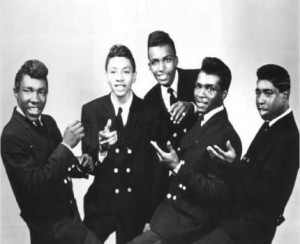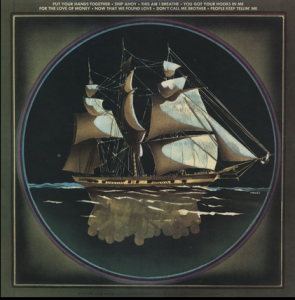Slaves have long been credited with developing a rich musical heritage. Traces of that heritage still permeate our world today. Musical genres such as ragtime, the blues, gospel, and jazz each contain elements inspired by Negro spirituals, slave work songs, and plantation life.
While the musical influences of slavery can hardly go unnoticed, especially if listeners consider the rhythms particular to certain songs or even the instruments used in current music, popular entertainers are working overtime to keep slavery on the forefront of their consumers minds. By explicitly referring to slavery in their lyrics, a handful of singers, mostly from the hip-hop community, force their patrons to consider where slavery exists in America’s cultural memory, whether or not the deep trauma associated with slavery still resonates today, and what new forms of slavery persist in the twenty-first century.
But before Nas referenced the Middle Passage in “Warrior Song” with Alicia Keys in 2002 or Tupac Shakur acknowledged the ramifications of slavery while critiquing the “American Dream” in “Panther Power” or Kanye speculated about how the incarceration of black males constitutes a modern form of slavery in “New Slaves” another set of musicians endeavored to highlight slavery in their own work: The O’Jays.
Formed in 1958 in Canton, Ohio, the O’Jays, an R&B group, first started with five male vocal performers including Eddie Levert, Sr., Walter Williams, Sr., William Powell, Bobby Massey, and Bill Isles.[1] Originally known as the Triumphs, the O’Jays adopted the name they still use today when a Cleveland disc jockey, Eddie O’Jay took them under his guidance and renamed them. While the group has changed over the years retaining only two of their original five singers – Eddie Levert, Sr. and Walter Williams, Sr. – and adding Eric Nolan Grant, their music is no less powerful even with the alternations.
Best known today for their contribution to soul music, the O’Jays toped the charts with their music releases in the seventies. Some of their hits include “Back Stabbers,” “For the Love of Money,” and “Use Ta Be My Girl.” Although originally from Ohio, the O’Jays put Philly Soul, otherwise known as “The Sound of Philadelphia” [TSOP], on the map after producers Kenneth Gamble and Leon A. Huff recruited them to sing for their project, Philadelphia International, in 1972.[2]
When people think of 1970s soul protest music Marvin Gaye’s “What’s Going On?” and Curtis Mayfield’s “(Don’t Worry) If There’s a Hell Below, We’re All Going to Go” come to mind. But few seriously consider the O’Jays 1973 song, “Ship Ahoy,” either because they cannot grasp its impact or more frequently, have never heard of it.
The 1973 song appears on the O’Jays album also named Ship Ahoy. Written by Gamble and Huff, this album became the highest selling R&B album on the Billboard Year-End chart in 1974. In a New York Times article from Mach 31, 1974 entitled “The Philly Sound of Brotherly Love,” critic Clayton Riley raves that the O’Jays produced several of their most spectacular songs on Ship Ahoy.
While the song, “Ship Ahoy,” demands serious attention so, too, does the album cover that contains the song. The artist, James Barkley, painted two sets of images of the front of the album. The first image reveals a group of African slaves cramped together aboard a ship. The image immediately below it is a close-up of the O’Jays members including Walter Williams, William Powell, and Eddie Levert. While it is possible to identify the images of the O’Jays, it is far more difficult to recognize the slaves at the top of the album. In fact, apart from their faces being indistinguishable and some having no faces at all, their bodies appear melded together as if they are one inseparable creature. Shaven, unclothed, and shrouded in darkness, Barkley reminds people of how very little is known about the slaves who were distributed during the Middle Passage through this image. As he paints the slaves leaning on one another, he both alludes to their forced kinship and their utter helplessness on their journey across the Atlantic. The juxtaposition of the image of the faceless, nameless slaves with the image of the O’Jays – a band headed for stardom – suggests that one way of accessing stories about the past is by listening to the storytellers who exist today including singers.
Interestingly, the backside of the album Ship Ahoy displays a painting of an illuminated slave ship. Unlike the images on the front of the cover, the ship is grand and dominates the entire frame of vision. Compared to the slaves on the front of the album, the slave ship has a known past that is traceable through history. Moreover, in the water, where there is supposed to be a reflection of the ship, all we see is a reflection of slaves, which suggests that today slaves only exist as a faint image; a memory. When Barkley places the slaves on the front of the album cover and the slave ship on the reverse side, he indicates that one purpose of Ship Ahoy is to focus on the narratives of the untold; to shift the attention of the viewers through music.
The song, “Ship Ahoy,” itself is unlike anything of its time. First off, “Ship Ahoy” is nine minutes and forty seconds long – three times the length of any song typically produced today or even in the 1970s. The first voice of the song that appears roughly forty-seconds after the song begins is that of a long drawn out groan or sigh. Prior to this voice, listeners sense they are on a ship after hearing sounds resembling strong winds, splashing water, wooden creaks, and thunderous storms. When the O’Jays start singing their lyrics describe the people onboard – “men, women, and baby slaves” – and their journey to the “land of liberty” where “life’s design is already made.” As the O’Jays sing of the tiring journey across the Atlantic, the only constant in the slaves’ lives is the sun that beats down on them. By the end of the song, the O’Jays initial description of the “land of liberty” becomes a “jail” – an unpromising destination where slaves are beaten, exploited for labor, and forever subordinate to their masters.
While the lyrics of “Ship Ahoy” tell of the exhaustive journey of the Middle Passage and the slaves arrival in the Americas, the silences of the song are equally important. The long gaps and pauses apparent throughout the song and especially at the beginning reflect the waiting that the slaves endured as they were shipped from one location to another. Although the long pause at the start of the song is unsettling to listeners since we are used to hearing words shortly after the music begins, the silence attempts to replicate in listeners the feeling of uncertainty in slaves who embarked on journeys with very few details, if any, about their impending trips. The one phrase used the most in the O’Jays song is “Ship Ahoy.” “Ship Ahoy” is the phrase the O’Jays belt out between verses. While the exact origin of this phrase is unknown, “Ship Ahoy” was generally used by sailors to both greet ships and announce their presence. That the O’Jays choose to not only name their song “Ship Ahoy,” but also repeat the phrase excessively throughout the song suggests their desire to call attention to the hundreds upon thousands of ships that facilitated the Middle Passage.
The O’Jays production of “Ship Ahoy” warrants attention, not unlike other songs that discuss slavery, because it forces listeners to consider the manifold ways that history is told and the effects of those different mediums be it art, song, performance, or literature. The topic of slavery has been ever present in recent years through television series including Henry Louis Gate, Jr.’s “The African Americans: Many Rivers to Cross,” movies including Django Unchained and 12 Years a Slave, songs including “New Slaves,” and literature including The Invention of Wings. In listening to the O’Jay’s hit song “Ship Ahoy” and reflecting on recent productions that emphasize slavery, one persistent question that emerges is: Why are we still talking about slavery? One answer may be that we have not yet fully developed a language that is capable of discussing slavery and these different productions serve to help start the conversation over anew in different ways with different voices.
Another question “Ship Ahoy” demands listeners to ask is how effective is socially conscious music? To put another way, does the music of the O’Jays inspire people to turn to other sources to learn about slavery or does it further commodify the slave and serve as the only means people today, especially students, even encounter slavery? While I’d like to think – and to some extent do think – that “Ship Ahoy” and other similar music is purposeful when it makes the issue of slavery accessible to everyday folk, it may also function as a disservice if listeners do not venture beyond the lyrics to learn more about the issue at hand. It is not implausible to suggest that artful representations of slavery serve as replacements for how students learn about slavery instead of reminders of the incidents that actually occurred.
As the O’Jays album and song, “Ship Ahoy,” endures for another year alongside new music, new art, and new literature about slavery, we, as consumers, must be prepared to ask at what cost, literally and figuratively, are we letting ourselves learn about slavery and how might we best use new material on slavery to supplement what we already know and not replace it.
[1] http://rockhall.com/inductees/the-ojays/bio/
[2] http://theojayshomepage.com/bio.html



Really interesting to return to this song in context as a wonderful example of a multifaceted telling of the history of the slave trade. That album cover is remarkable.
In reading up more on this topic discovered that Duke’s Mark Anthony Neal wrote a great review of this album back in 2003. Might be interesting to incorporate some of his insights into this piece! http://www.popmatters.com/review/ojays-ship/
Now we know why they never received a Grammy, Not just Ship Ahoy, but other songs that placed the need of all families especially people of descendants of slaves to come together as a people. Give double credit to the mighty writers of all their songs a d the strength for them to sing these songs. 09/10/2019.
Ship ahoy is at most frightening I can’t imagine being stolen from my home thrown into a ship with 700 other souls to go where do do what millions of African people were kidnapped and stolen by the he world back then the song actually is so real I want to vomit I know some stolen folks jumped into the ocean surely facing death